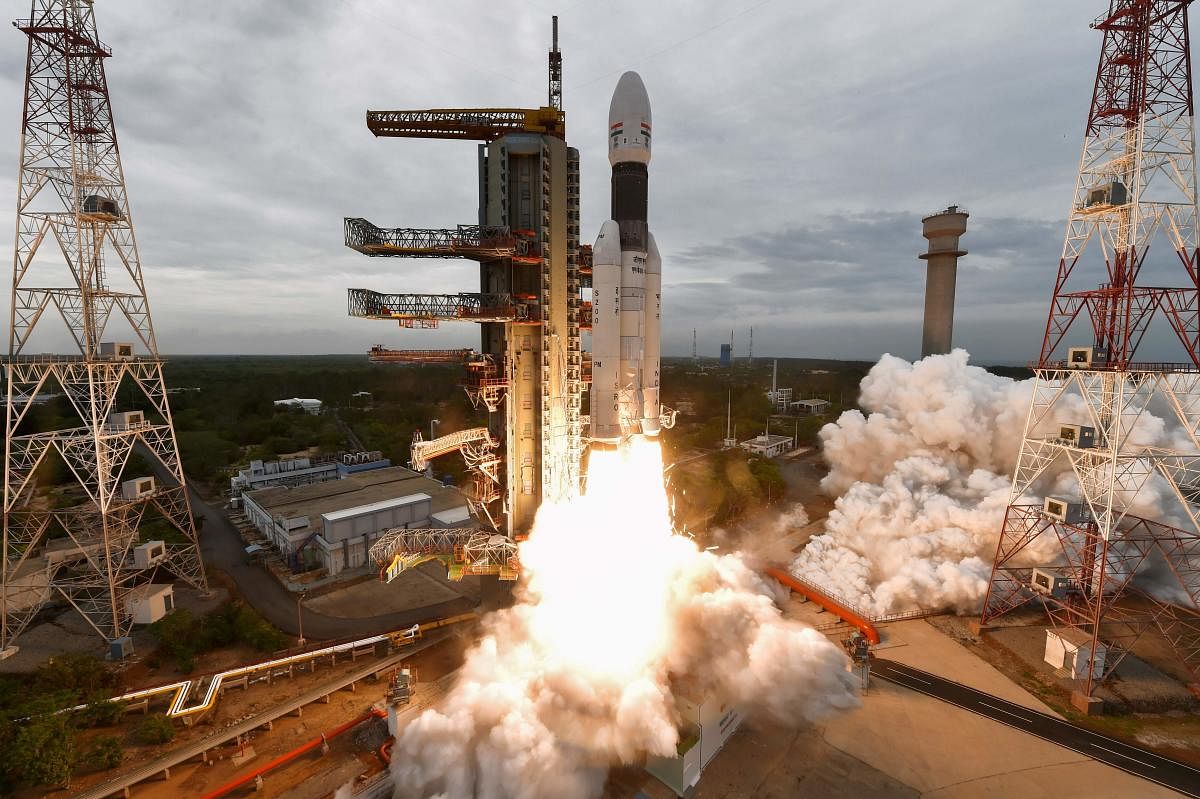
For the first time since Chandrayaan-2’s failure to accomplish a lunar soft-landing, the Indian Space Research Organisation (Isro) on Wednesday explained what went wrong in the mission Lander’s final moments. That seemed essential to explain its hurry to get the Chandrayaan-3 project going.
The fundamental fault was with the Vikram Lander’s velocity. But there was no problem during the rough-braking phase of the Lander’s final descent, as Isro Chairman K Sivan explained. “The velocity reduction thereafter was more than what was required.”
The fine-braking phase of the descent was not designed for this large deviation. Since the Lander was on autonomous mode and Isro had lost the critical communication link, hard-landing was inevitable. “The navigation and control systems could not handle the reduced velocity,” said Sivan.
In November last year, Union Minister of State for Space Jitendra Singh had informed that Vikram’s velocity had been reduced from 1,683 m/s to 146 m/s, way below the designed parameters. Within minutes, Vikram hard-landed
about 500m away from the designated landing site on September 7.
The total cost of Chandrayaan-2 was Rs 970 crore. While the launch vehicle cost Rs 367 crore, the combined cost of the Lander, Orbiter and Rover was Rs 603 crore. After a textbook launch and multiple manoeuvres that went as planned, the mission went out of control barely 2.1 km from the lunar surface.
The space agency had acknowledged a hard-landing. The Lander was found but Isro did not release any image. The National Aeronautics and Space Administration (Nasa) had recently published images of the impact site before and after the hard-landing.
It took a Chennai engineer, Shanmuga Subramaniam to identify the debris from the Nasa image. Asked why Isro did not release the image taken by the Chandrayaan Orbiter, Sivan attributed the reason to “strategy.” However, he congratulated Subramaniam for his effort.
Emotional hug
Overwhelmed by Chandrayaan-2’s last-minute failure, Sivan had hugged Prime Minister Narendra Modi. Recalling that episode, Sivan said: “It was an emotional moment. Nothing transpired between me and the prime minister. He just hugged and consoled.”
New launchpad
Isro is set to get a new launchpad spread across an area of 2,300 acres in Tuticorin, Tamil Nadu soon. Sivan said the land acquisition process for the new infrastructure had been initiated.
The new facility will be used to launch Small Satellite Launch Vehicles (SSLVs) initially. This could be upgraded for bigger launches later.